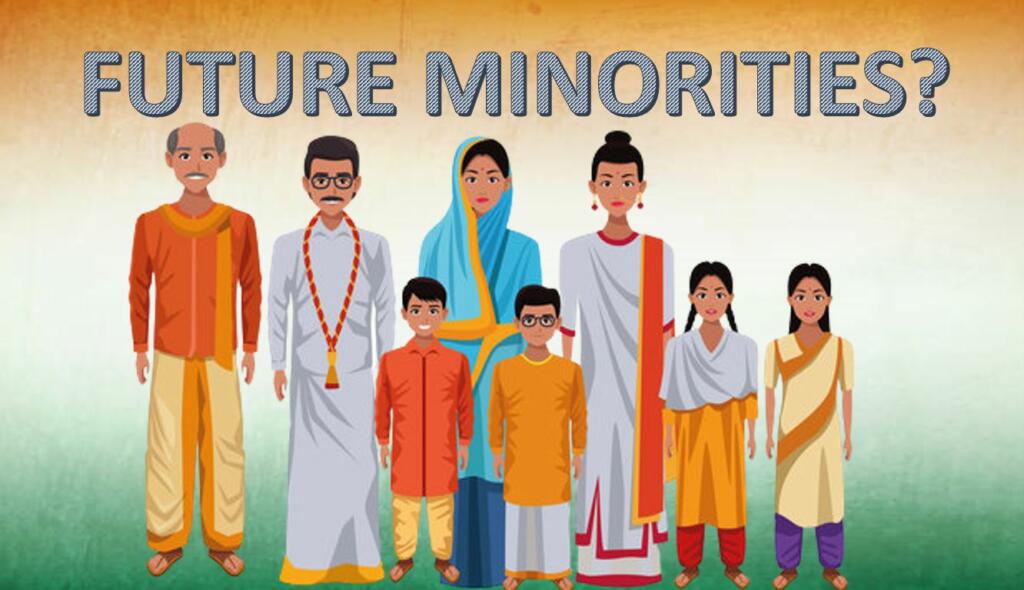India appears to have diffused the ticking time bomb of population explosion, as the total fertility rate (TFR) or the average number of children born to a woman over her lifetime, has fallen down below the replacement level to 2. According to data released by National Family Health Survey (NFSH) 2019-21, the replacement level (the level at which parents are replaced by their children) has been estimated at 2.1.
While the NFHS data has not compiled a separate religion column to make clear the fertility rates of respective religious groups that make up the population of India, a Pew Research report can help extrapolate the data better.
Muslims the most fertile religious group – Pew Research report:
The 2015 Pew Research report gave the religion numbers, where it was suggested that Muslims were the most fertile of religious groups with a rate of 2.6. Meanwhile, Hindus were around the 2.1 mark with other minorities coming behind.
The report said, “Muslims still have the highest fertility rate among India’s major religious groups, followed by Hindus at 2.1. Jains have the lowest fertility rate (1.2). The general pattern is largely the same as it was in 1992, when Muslims had the highest fertility rate at 4.4, followed by Hindus at 3.3. But the gaps in childbearing between India’s religious groups are generally much smaller than they used to be,”
While the difference of 0.5 and that too in 2015 might not look rather drastic or alarming, it does raise certain points.
Hindu population has decreased after independence, Muslims have increased:
For a better picture, let’s wind the clock back, a few decades. At the time of independence, in the first census of 1951, Hindus were the majority, with 84.1% of the total population. However, by the 2011 census, Hindus only made up 79.8% of India’s 1.2 billion (120 crores) total inhabitants. That is 0.7 percentage points less than in the previous census of 2001, and 4.3 points below the 84.1 percent recorded in 1951.
Meanwhile, the share of Muslims grew from 13.4% in 2001 to 14.2% in 2011 – up by a total of 4.4 percentage points since 1951, when the census found that Muslims comprised 9.8% of India’s population.
Christians, Sikhs, Buddhists and Jains, who together make up nearly all of the remaining 6% of the population, were relatively stable in their shares since the 1951 census. Statistical analysis of census and survey data shows that fertility has been by far the biggest driver of the religious change in the decades since the partition, with Muslims taking the cake.
Muslims will continue to grow with fertility rate above replacement level:
It is also important to remember that for every single percentage down, Hindus, owing to their large population, tend to have a large chunk of their population wiped, compared to Muslims.
Thus, the Muslims with their comparatively higher fertility rate still continue to replace themselves as well as the Hindus. Despite the absence of NFHS religion data, the estimates cannot be far off, taking a rough gander at the state-wise data.
Fertility rate high in Muslim dense population states:
States like Uttar Pradesh and Bihar have fertility rates of 2.4 and 3.0, respectively. According to the 2011 census data, Muslim Population in Bihar was 1.76 crore (16.87%) of total 10.41 crore, which somewhat speaks about the still prevalent higher overall fertility rates. The 2021 census data will further shed light on the current distribution of population.
Meanwhile, as per the census of 2011, Muslim Population in Uttar Pradesh was also on the high side at 3.85 crore (19.26%) of total 19.98 crore population.
The population decreasing is heartening news, but with Hindus more or less below the replacement level, their numbers might take a severe beating, if Muslims continue to stay above the replacement level.
There is still a major chunk of Muslim population that is extremely backward and not prone to using contraceptives or educating themselves about the perils of regenerating at higher levels. Thus, the population control bill and its demand is a double-edged sword for the Hindus. They are already below the replacement level, with other minority groups like Jain and Parsis in even dire straits.
